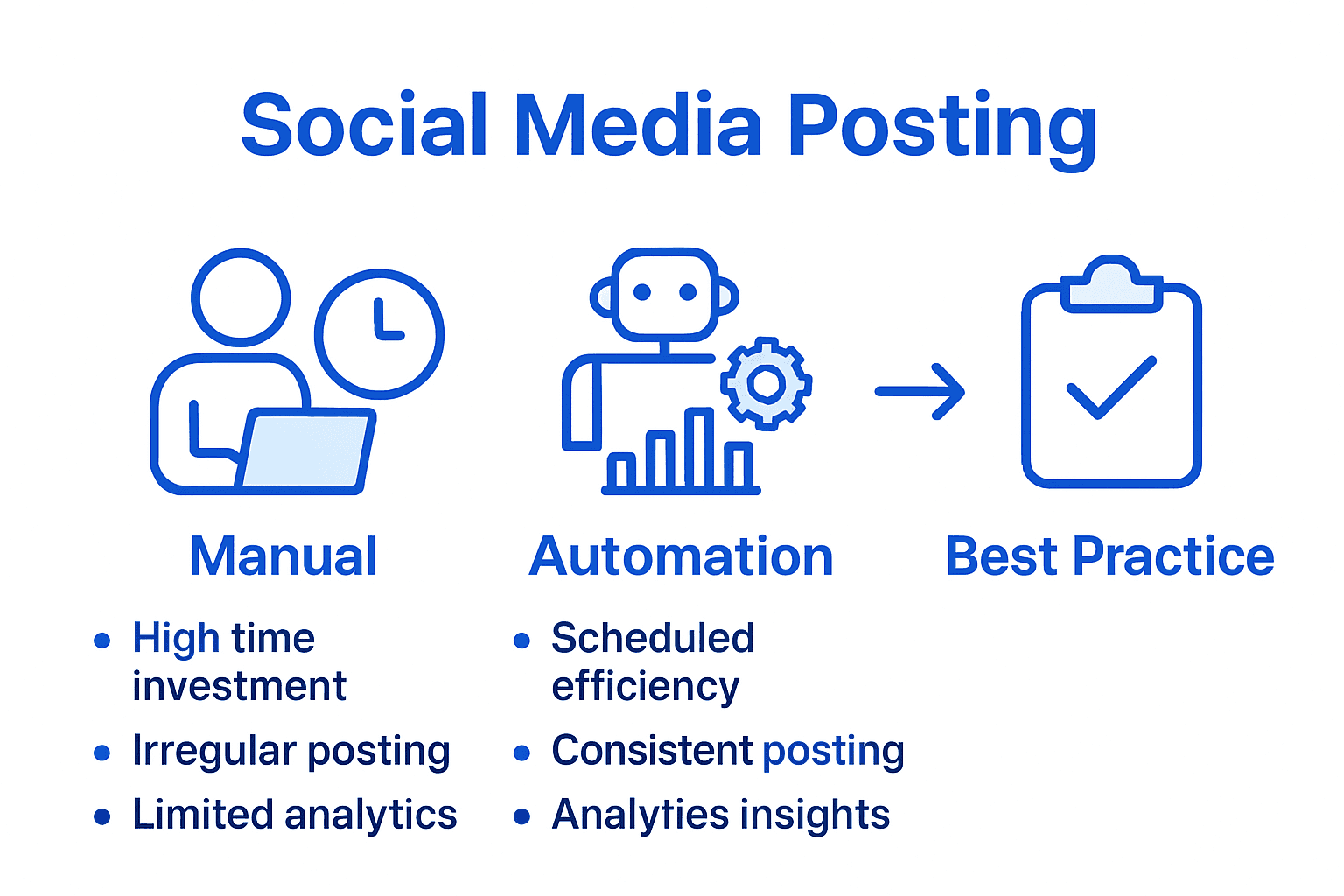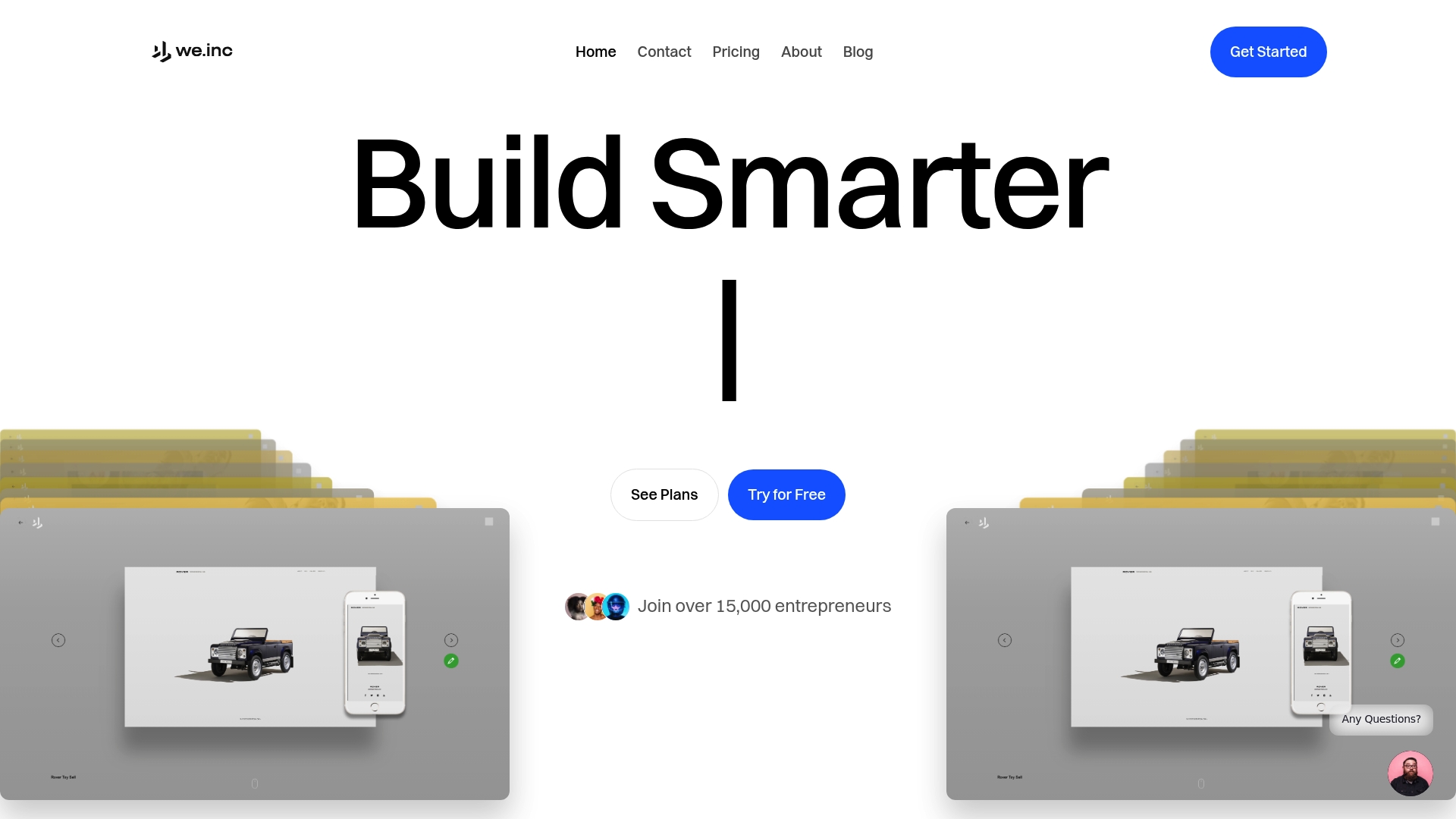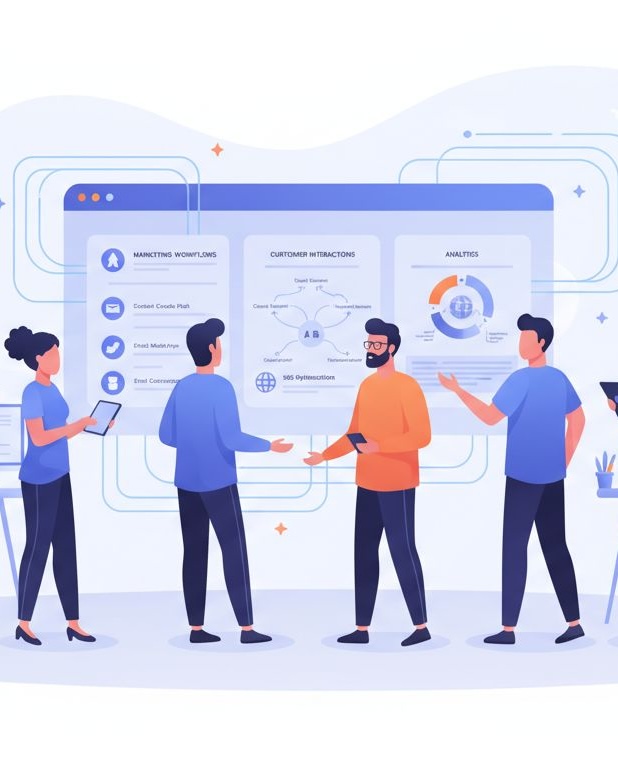Complete Guide to the Role of Social Media Scheduling

Did you know that businesses using social media scheduling tools are three times more likely to maintain a consistent online presence and see higher engagement rates? With so much competition for attention, staying organized is more important than ever. Smart scheduling not only saves time but also helps brands deliver the right message exactly when their audience is most active, making online marketing efforts both more efficient and impactful.
Table of Contents
- Defining Social Media Scheduling And Its Purpose
- Types Of Social Media Scheduling Tools And Platforms
- How Automation Enhances Marketing Efficiency
- Key Benefits For Businesses And Agencies
- Common Mistakes And How To Avoid Them
- Comparing Manual Posting Vs Automated Scheduling
Key Takeaways
| Point | Details |
|---|---|
| Strategic Scheduling | Social media scheduling transforms random posting into a systematic strategy, ensuring consistent brand messaging and efficient audience engagement. |
| Utilization of Tools | Advanced scheduling tools centralize content management, allowing businesses to automate posting across multiple platforms and streamline workflows. |
| Avoid Common Pitfalls | Prioritize nuanced strategies to avoid over-automation and ensure relevant, engaging content that resonates with specific audiences. |
| Marketing Automation Benefits | Automation enhances marketing efficiency by minimizing manual tasks, providing real-time insights, and enabling data-driven decision-making. |
Defining Social Media Scheduling and Its Purpose
Social media scheduling is a strategic planning process where businesses and creators systematically prepare and automate content publication across various digital platforms. According to research from Wikipedia, an editorial calendar enables organizations to control content distribution across multiple media channels, including social networks, blogs, and email newsletters.
At its core, social media scheduling transforms random posting into a deliberate, organized strategy. Professionals use scheduling tools to plan content in advance, ensuring consistent brand messaging, optimal audience engagement, and efficient time management. Social Media platforms become more manageable when content is strategically mapped out weeks or even months ahead.
Key benefits of social media scheduling include:
- Maintaining a consistent online presence
- Reducing daily content creation stress
- Allowing precise timing for maximum audience reach
- Enabling cross-platform content distribution
- Providing analytics and performance tracking
By leveraging scheduling techniques, businesses can transform their social media approach from reactive to proactive, creating a structured digital communication strategy that maximizes engagement and brand visibility. The ultimate goal is not just posting content, but delivering the right message at the right time to the right audience.
Types of Social Media Scheduling Tools and Platforms
Social media scheduling tools have evolved dramatically, offering businesses powerful solutions for streamlining their digital content strategy. According to research from Indeed, platforms like Sprout Social enable users to post content simultaneously across multiple social media networks, simplifying the complex task of cross-platform management.
Modern scheduling tools can be categorized into several key types:
- All-in-One Platforms: Comprehensive tools that manage multiple social networks
- Network-Specific Schedulers: Tools designed for individual platforms
- Enterprise-Level Solutions: Advanced systems for large organizations
- Free and Freemium Tools: Basic scheduling options with limited features
According to Wikipedia, applications like Marketing Bot offer advanced capabilities. For instance, Buffer allows scheduling across platforms including Twitter, Facebook, LinkedIn, Instagram, and TikTok, while providing analytics and community engagement features. These tools transform social media management from a time-consuming manual process to a streamlined, strategic operation.

When selecting a scheduling tool, businesses should consider factors like platform compatibility, analytics depth, user interface, pricing, and integration capabilities. The right tool can significantly reduce content creation stress, optimize posting times, and provide valuable insights into audience engagement and content performance.
How Automation Enhances Marketing Efficiency
Marketing automation transforms how businesses approach digital communication, turning time-consuming manual processes into streamlined, intelligent strategies. According to research from social media experts, most scheduling tools now offer built-in analytics that help marketers understand precisely which content performs best across different channels.
The core benefits of marketing automation include:
- Reducing repetitive manual tasks
- Ensuring consistent brand messaging
- Optimizing content delivery times
- Providing real-time performance insights
- Enabling data-driven marketing decisions
By leveraging advanced automation technologies, businesses can dramatically improve their marketing efficiency. 7 Essential AI Tools for Startups to Boost Growth demonstrate how intelligent systems can transform content strategy. Automation allows marketing teams to focus on creative strategy instead of getting bogged down in tactical execution, creating more space for innovative thinking and strategic planning.
Professionals can now schedule content across multiple platforms, track engagement metrics in real-time, and adjust strategies dynamically. This shift from reactive to proactive marketing means businesses can anticipate audience needs, personalize content more effectively, and maintain a consistent online presence with minimal manual intervention.
Key Benefits for Businesses and Agencies
Social media scheduling tools have become indispensable for modern businesses seeking to streamline their digital marketing efforts. According to research from Indeed, platforms like Sprout Social enable organizations to post content simultaneously across multiple social networks, solving the complex challenge of multi-platform management.
Key benefits for businesses and agencies include:
- Centralized Content Management: Simplifying coordination across platforms
- Time Efficiency: Reducing manual posting workload
- Strategic Content Planning: Enabling long-term marketing strategies
- Performance Tracking: Providing comprehensive analytics insights
- Brand Consistency: Maintaining uniform messaging across channels
For agencies managing multiple client accounts, Project Stacking becomes crucial in maximizing productivity. As research from Sendible highlights, these tools centralize management across platforms like Instagram, Facebook, LinkedIn, Twitter, and TikTok, allowing marketing professionals to create, schedule, and analyze content from a single dashboard.
Ultimately, social media scheduling transforms digital marketing from a reactive task to a strategic operation. By automating routine processes, businesses can allocate more resources to creative strategy, audience engagement, and innovative content development, turning social media management from a time-consuming challenge into a powerful growth mechanism.
Common Mistakes and How to Avoid Them
Social media scheduling can quickly become ineffective when businesses fall into common strategic traps. Many organizations unknowingly sabotage their digital marketing efforts by approaching scheduling without a comprehensive understanding of platform dynamics and audience engagement.
The most critical mistakes to avoid include:
- Over-Automating Content: Losing human touch and authenticity
- Inconsistent Posting Frequency: Creating audience confusion
- Ignoring Platform-Specific Nuances: Treating all social networks identically
- Neglecting Performance Analytics: Missing key optimization opportunities
- Scheduling Without Context: Posting generic, non-targeted content
Unlimited AI Suite can help marketers overcome these challenges by providing intelligent content management solutions. Successful social media scheduling requires a nuanced approach that balances automated efficiency with genuine, contextually relevant communication. Professionals must remain adaptable, continuously analyzing performance metrics and adjusting strategies to maintain audience engagement.
Ultimately, the goal is not just to post content, but to create meaningful connections. By understanding platform algorithms, respecting audience preferences, and maintaining a strategic yet flexible approach, businesses can transform social media scheduling from a mundane task into a powerful relationship-building tool.
Comparing Manual Posting vs. Automated Scheduling
Manual social media posting represents the traditional approach where businesses individually publish content across different platforms, consuming significant time and resources. According to research from Sendible, modern scheduling tools have transformed this process by centralizing management across multiple channels like Instagram, Facebook, LinkedIn, Twitter, and TikTok.
Key differences between manual and automated posting include:
- Time Investment: Manual posting requires constant real-time attention
- Consistency: Automated scheduling ensures regular content distribution
- Platform Coverage: Scheduling tools enable simultaneous multi-platform posting
- Analytics: Automated tools provide comprehensive performance insights
- Flexibility: Manual posting allows immediate, contextual responses
7 Essential AI Tools for Startups to Boost Growth demonstrate how intelligent systems can bridge the gap between manual and automated approaches. While manual posting offers spontaneity, automated scheduling provides strategic planning, allowing businesses to maintain a consistent online presence without constant manual intervention.
Ultimately, the most effective strategy combines automated scheduling with human creativity. By leveraging technology to handle routine posting tasks, businesses can free up valuable time to focus on crafting engaging, authentic content that truly resonates with their audience.
Here’s a side-by-side look at manual posting and automated scheduling for social media:
| Aspect | Manual Posting | Automated Scheduling |
|---|---|---|
| Time Investment | High Real-time effort |
Low Pre-scheduled content |
| Consistency | Variable Often irregular |
Consistent Planned cadence |
| Platform Coverage | Single platform at a time | Multiple platforms at once |
| Analytics | Limited tracking | Advanced performance insights |
| Flexibility | Highly adaptable | Strategic, less spontaneous |
| Resource Efficiency | Labor-intensive | Streamlined process |

Turn Social Media Scheduling Into Your Team’s Competitive Edge
You have seen how inconsistent posting, manual processes, and platform overload drain your resources. The article highlighted how social media scheduling transforms that chaos into a proactive, organized strategy. Yet, building a sustainable routine can feel like running a marathon alone, especially if you juggle multiple brands or clients. Challenges like fragmented tools, lack of analytics, and time-consuming content planning stand in the way of predictable growth. If you want to avoid the common pitfalls and truly achieve automation and efficiency, you need a solution that goes beyond basic scheduling.

Meet We.inc, the all-in-one platform designed for entrepreneurs, agencies, and small businesses just like yours. Automate social media posting across every channel, manage your entire digital strategy from one simple dashboard, and use built-in AI to keep your brand voice consistent everywhere. Stop worrying about gaps in your content calendar or missed engagement spikes. Combine Unlimited AI Suite for creative support with Marketing Bot for automated engagement, and never fall behind again. Visit We.inc now to put your social media on autopilot and unlock rapid digital growth today.
Frequently Asked Questions
What is social media scheduling?
Social media scheduling is the process of planning and automating the publication of content across various digital platforms, allowing businesses and creators to maintain a consistent online presence and optimize audience engagement.
What are the benefits of using social media scheduling tools?
Key benefits include maintaining a consistent online presence, reducing daily content creation stress, enabling precise timing for maximum audience reach, facilitating cross-platform content distribution, and providing analytics for performance tracking.
How do automation tools enhance marketing efficiency in social media?
Automation tools streamline manual processes, reduce repetitive tasks, ensure consistent messaging, optimize content delivery timing, and provide real-time performance insights, allowing businesses to focus on strategy rather than execution.
What common mistakes should businesses avoid when scheduling content on social media?
Common mistakes include over-automating content, inconsistent posting frequency, ignoring platform-specific nuances, neglecting performance analytics, and scheduling non-targeted content. Avoiding these pitfalls helps in maintaining audience engagement and effectiveness.
%20(1).svg)

